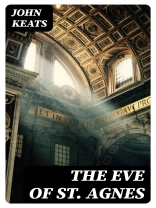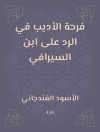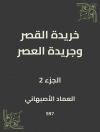In John Keats’ narrative poem ‘The Eve of St. Agnes, ‘ the reader is transported to a medieval world steeped in romantic idealism and rich sensory detail. Set against the backdrop of a mythic St. Agnes’ Eve, Keats weaves a tale of forbidden love, replete with themes of desire and transcendence. His lush, evocative language and mastery of imagery create an immersive experience; the poem serves as both a celebration of youthful passion and a meditation on the ephemeral nature of love. Keats’ exploration of tension between reality and dreams reflects the broader Romantic movement’s fascination with emotion and the sublime. John Keats, a pivotal figure in the Romantic tradition, was deeply influenced by his own life experiences, including the pain of loss and the quest for beauty. His struggles with mortality and the fleeting nature of human experience imbue ‘The Eve of St. Agnes’ with a profound emotional depth. Keats’ fascination with medieval narratives and his affection for classical literature inspired him to craft this timeless allegory, blending personal longing with universal themes. This enchanting poem is highly recommended for readers interested in Romantic literature, as it exemplifies the profound beauty and complexity of human emotion. Keats’ rich imagery and narrative depth invite contemplation, allowing readers to engage with the themes of love, longing, and the interplay of dream and reality. Dive into Keats’ world and experience a masterful exploration of the heart.
लेखक के बारे में
John Keats (1795–1821) stands as one of the towering figures in the history of English Romantic poetry. Despite a life tragically cut short by tuberculosis at the age of 25, Keats’s work has endured and continues to be celebrated for its rich imagery, sensuous appeal, and an exquisite use of language. Unlike the privileged literary elite of his time, Keats was born to a working-class family in London and trained as an apothecary before fully embracing his calling as a poet. His mastery of verse and emotive power is profoundly evident in works such as ‘The Eve of St. Agnes’, a narrative poem that typifies his mature style. Published in 1820, this piece weaves a romantic tale set in the Middle Ages, marked by its vivid depictions and lush settings. The poem underscores Keat’s fascination with beauty and the transient nature of human experience—themes omnipresent throughout his oeuvre. While his literary career was brief, spanning just a handful of years, Keats’s profound influence on the Romantic movement and subsequent generations of poets remains indisputable. His contributions continue to be admired for their melodic beauty and philosophical depth, resonating well beyond the Romantic era to the present day.












